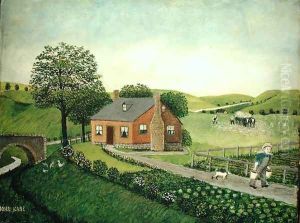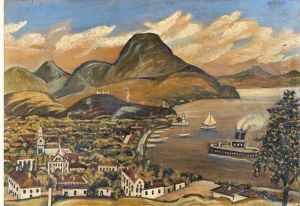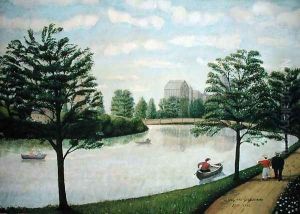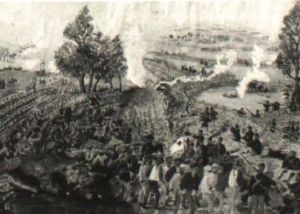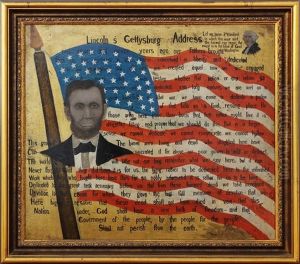John Kane Paintings
John Kane was a Scottish-born American painter, celebrated as one of the most notable self-taught artists of the 20th century. His life story is a remarkable tale of resilience, passion, and late-blooming artistic achievement. Born in West Calder, Scotland, on August 19, 1860, Kane emigrated to the United States in the 1870s, initially settling in Braddock, Pennsylvania, a burgeoning industrial town. His early years in America were marked by a succession of manual labor jobs, from railway construction and steel mills to coal mines, reflecting the hard realities of immigrant life in the industrial age.
Despite his humble beginnings and limited formal education, Kane nurtured a deep interest in art. His artistic journey began in earnest after a severe industrial accident left him with a permanently injured leg, limiting his ability to perform physical labor. It was during this period of convalescence that Kane began to seriously pursue painting, teaching himself by copying images from postcards, advertisements, and the works he saw in museums and galleries. His subjects ranged from portraits and landscapes to scenes of industrial Pittsburgh, capturing the essence of American life and landscape with a vibrant, folk-style realism.
Kane’s breakthrough came in 1927, at the age of 67, when one of his paintings was accepted into the prestigious Carnegie International Exhibition in Pittsburgh, an event that marked the beginning of his recognition as a professional artist. Over the next several years, Kane's work gained increasing acclaim, and he was featured in numerous exhibitions, including a solo show at the Museum of Modern Art in New York City in 1931. His style, characterized by bold colors, straightforward composition, and a unique blend of realism and naïveté, resonated with both critics and the public.
John Kane's life and career stand as a testament to the power of perseverance and the pursuit of one’s passion regardless of age or circumstance. His art, which chronicled both his personal journey and the broader American experience of his time, remains an important part of the country's artistic heritage. Kane passed away on August 10, 1934, in Pittsburgh, Pennsylvania, but his work continues to inspire and be celebrated for its originality and heartfelt portrayal of early 20th-century America.
